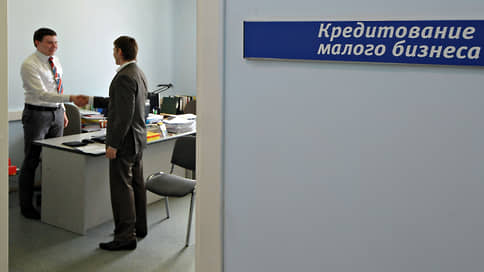Banks are cautious about financing SMEs
[ad_1]

Despite the increase in the issuance of loans to SMEs by a third in 2023, the level of lending penetration into the segment remains below 10%. Banks are still treating it cautiously. After the start of sanctions pressure on large businesses in 2022 and the introduction of restrictions on retail lending by the Central Bank in 2023, the SME segment looks promising, but difficulties remain with business valuation, its transparency and collateral.
Despite the high growth rates of lending to the SME segment, the level of penetration of such services in this segment remains low. According to Expert RA, at the end of last year it amounted to only 9% (Kommersant got acquainted with the review). According to the Central Bank, over the past two-plus years this figure has been steadily growing (from 6% in mid-2021). However, at the end of 2023, the dynamics slowed down significantly.
As Yulia Yakupova, director for bank ratings at the Expert RA agency, explains, “special attention to the role of SMEs in the country’s economy began to be paid not so long ago.” As a result, historically there is a fairly large number of SMEs that are not actively operating. In addition, Ms. Yakupova notes, “even today it is not so easy for many small and medium-sized enterprises to obtain credit funds on favorable terms for business.” The level of penetration has historically been limited by the low transparency of activities and the quality of reporting in the SME segment, as well as its higher credit risks, adds Suren Asaturov, director of the ACRA financial institutions ratings group. In addition, the segment has a high level of self-financing, he notes.
According to the Federal Tax Service, more than 6.5 million SMEs are registered in Russia. According to the Central Bank, their total loan portfolio for 2023 grew by 29% and reached 12.43 trillion rubles. By the end of 2023, the volume of overdue debt reached RUB 620 billion, an increase of 15%, which is the highest growth rate since 2017. At the same time, the share of overdue debt was 5%, which was the lowest level since 2010. Against the background of a reduction in the volume of government programs this year, the growth rate of lending in the segment may slow down to 20% (see “Kommersant” dated April 2).
SMEs have great potential, especially given the strengthening of their role in the transformation of the economy, taking into account the sanctions pressure on large businesses (see “Kommersant” dated January 19). The ongoing infrastructure construction and the lower sensitivity of SMEs compared to large enterprises to tough monetary conditions, together with regulatory restrictions in terms of retail lending, are pushing the banking industry to focus on alternative areas, Suren Asaturov believes.
However, financing of the segment will be focused on short-term loans, market participants admit. The determining factor in lending to entrepreneurs is the key rate – with its high value, the demand for financing shifts towards short-term working capital, notes Kirill Tikhonov, deputy head of the medium and small business unit of PSB.
In general, the dynamics of lending in this segment “will be determined by the availability of special preferential programs that make it possible to attract long-term financing for a period of five years or more at rates not exceeding 10%,” PSB notes.
According to the Bank of Russia for February, the weighted average interest rate for SMEs was 15.66% per annum for loans with a term of up to one year and 15.1% per annum for loans with a term of more than a year.
Experts do not rule out that overdue debt could rise to 7% by the end of the year. However, according to Yegor Lopatin, director of the group of financial institution ratings of the NKR agency, given the low share of the SME portfolio in the total loan portfolio of the banking system, this will not lead to a significant increase in the cost of risk in the sector as a whole.
[ad_2]
Source link





